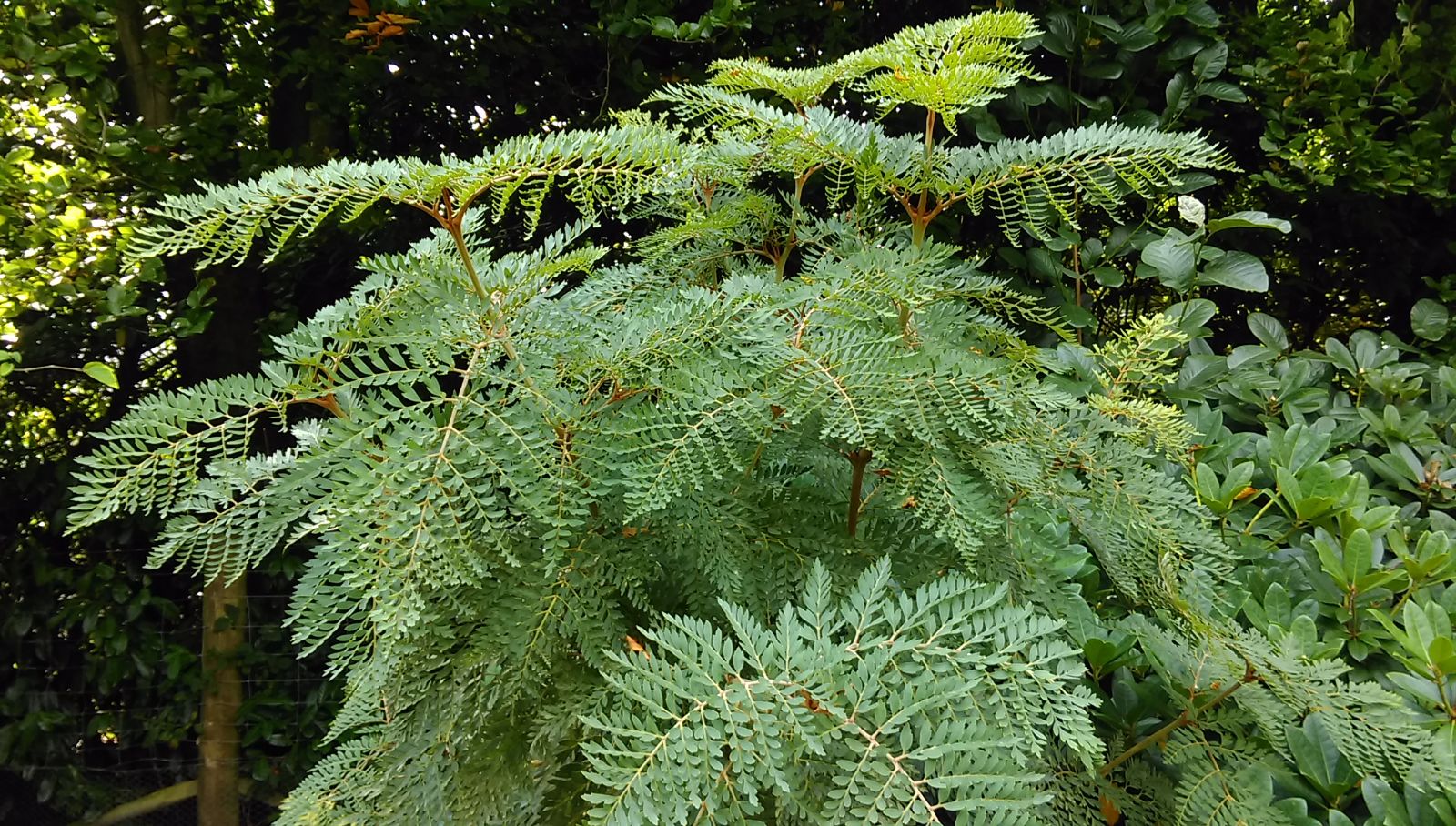Lomatia ferruginea
Credits
Article from Bean's Trees and Shrubs Hardy in the British Isles
Recommended citation
'Lomatia ferruginea' from the website Trees and Shrubs Online (treesandshrubsonline.
Genus
Synonyms
- Embothrium ferrugineum Cav.
An evergreen shrub or a tree up to 30 ft high; branchlets clothed with a rich brownish red, velvety down. Leaves mostly pinnate, with the pinnae (i.e., primary divisions) deeply and pinnately lobed; but some of the smaller leaves have unlobed segments. They vary from 3 to 8 in. in length and in main outline are oblong to ovate; the pinnae are usually up to 2 to 3 in. long, and vary from six to fifteen in number, decreasing in size towards each end; the ultimate segments being of oblong or obovate shape, pointed, about 1⁄2 in. long, dull dark green and at first downy above, covered beneath with down which is whitish, becoming tawny with age. The main and secondary leaf-stalks are covered with velvety down like that of the young shoots. Racemes axillary, 11⁄2 to 2 in. long, carrying a dozen or more flowers, each about 1⁄2 in. long, tawny yellow and red; there are four perianth-segments, the style is curved and terminated by the large stigma characteristic of the genus; flower-stalks and petals downy. Flowers in July. Bot. Mag., t. 8112.
Native of Chile and bordering parts of Argentina; introduced by William Lobb between 1845 and 1848 for Messrs Veitch; it is frequent on the island of Chiloe. Its foliage is of a fern-like character and in this respect it is one of the handsomest trees that have come from S. America. The flowers, which are not particularly handsome, are of curious structure, the segments of the perianth bearing the stalkless anthers on their recurved tips.
L. ferruginea is incapable of withstanding the winters at Kew but is hardy at Wakehurst, in Sussex, where there are several small specimens. The tree is, however, happiest in the milder and rainier parts of the British Isles and nowhere more so than in Ireland, where the following examples were recorded in 1966 (to mention only those over 30 ft in height): Castlewellan, Co. Down, a five-stemmed bush 49 ft high; Mount Usher, Co. Wicklow, Eire,pl. 1928, 39 × 11⁄2 ft; Ashbourne House, Co. Cork, Eire, 39 × 21⁄4 + 13⁄4 ft.
The description given above is based on the foliage, etc., as usually seen in this country. In the Chilean rain-forests L. ferruginea often occurs as a very sparsely branched shrub or small tree with leaves of enormous size concentrated around the terminal buds. There is a leaf collected on the island of Chiloe and preserved at Kew which is 20 in. long and 10 in. wide. A possible explanation of the difference is that in the very mild and moist conditions of the temperate rain-forests the terminal buds are able to maintain their dominance over the axillary buds, which remain mostly dormant. In cultivated plants, growing in less favourable conditions, the terminal buds are either killed by frost or fail to develop. This ‘pruning’ results in the production of numerous axillary shoots bearing shorter leaves.
From the Supplement (Vol. V)
specimens: Coleton Fishacre, Devon, pl. 1930, 23 × 1 ft (1984); Trewidden, Cornwall, 31 × 1 ft (1979); Mount Stewart, Co. Down, 38 × 2 ft (1976); Castlewellan, Co. Down, five-stemmed and about 49 ft high (1966); Parkanaur, Co. Armagh, 25 × 2 + 1 ft (1982); Mount Usher, Co. Wicklow, Eire, 36 × 2 +2 ft (1975); Ashbourne House, Co. Cork, Eire, 39 × 21⁄4 + 13⁄4 ft (1966).


